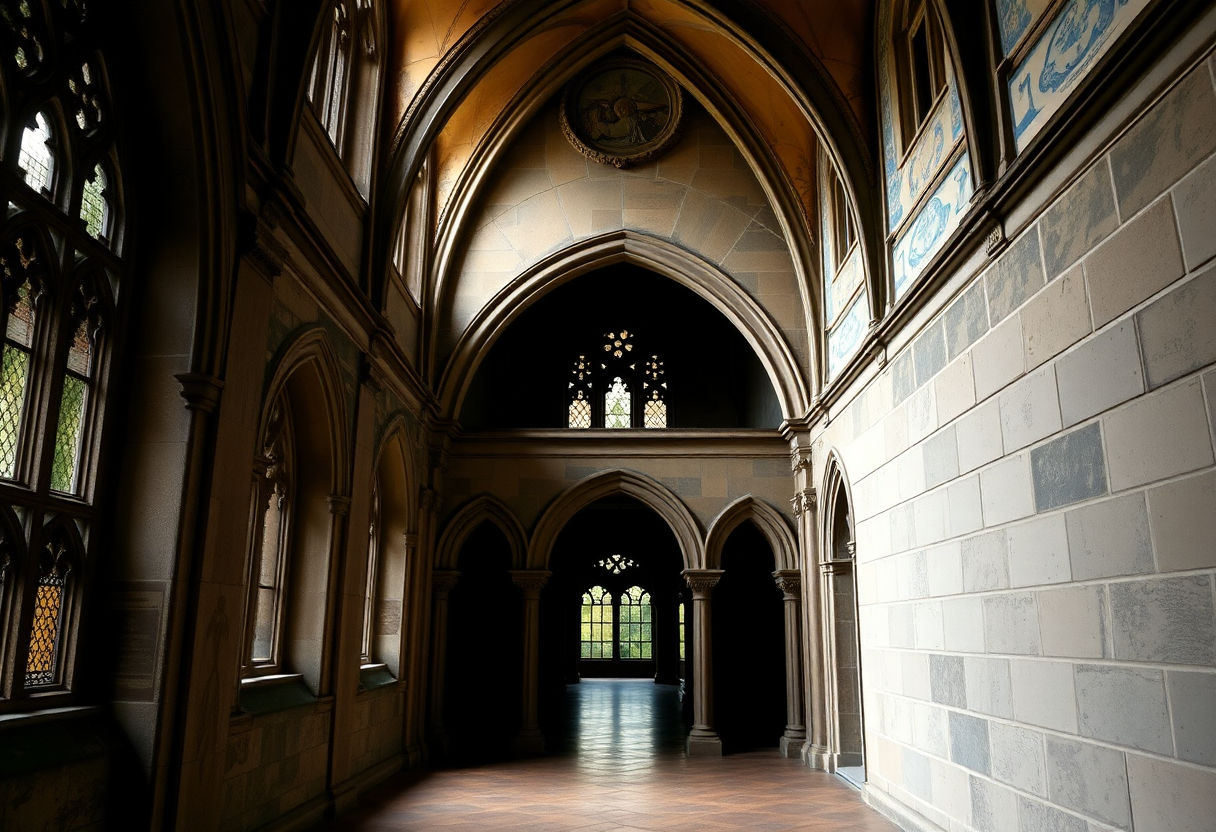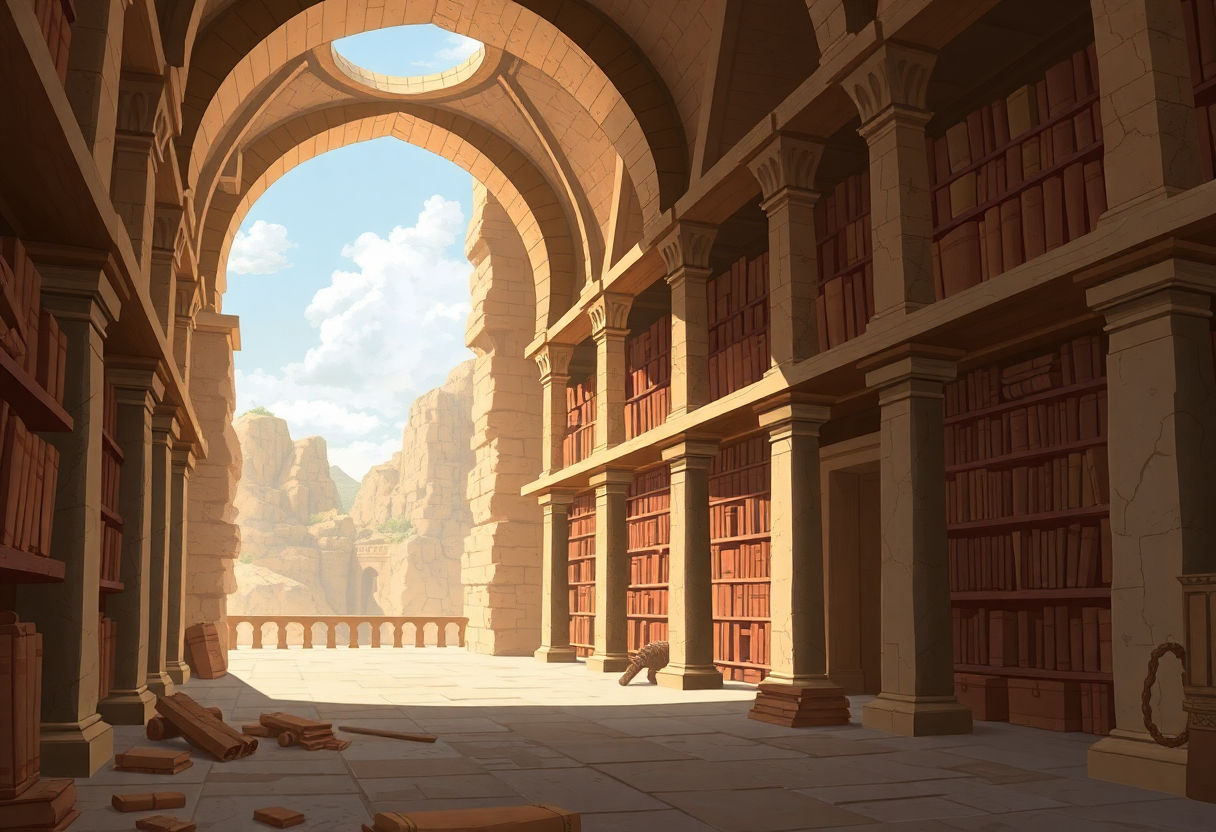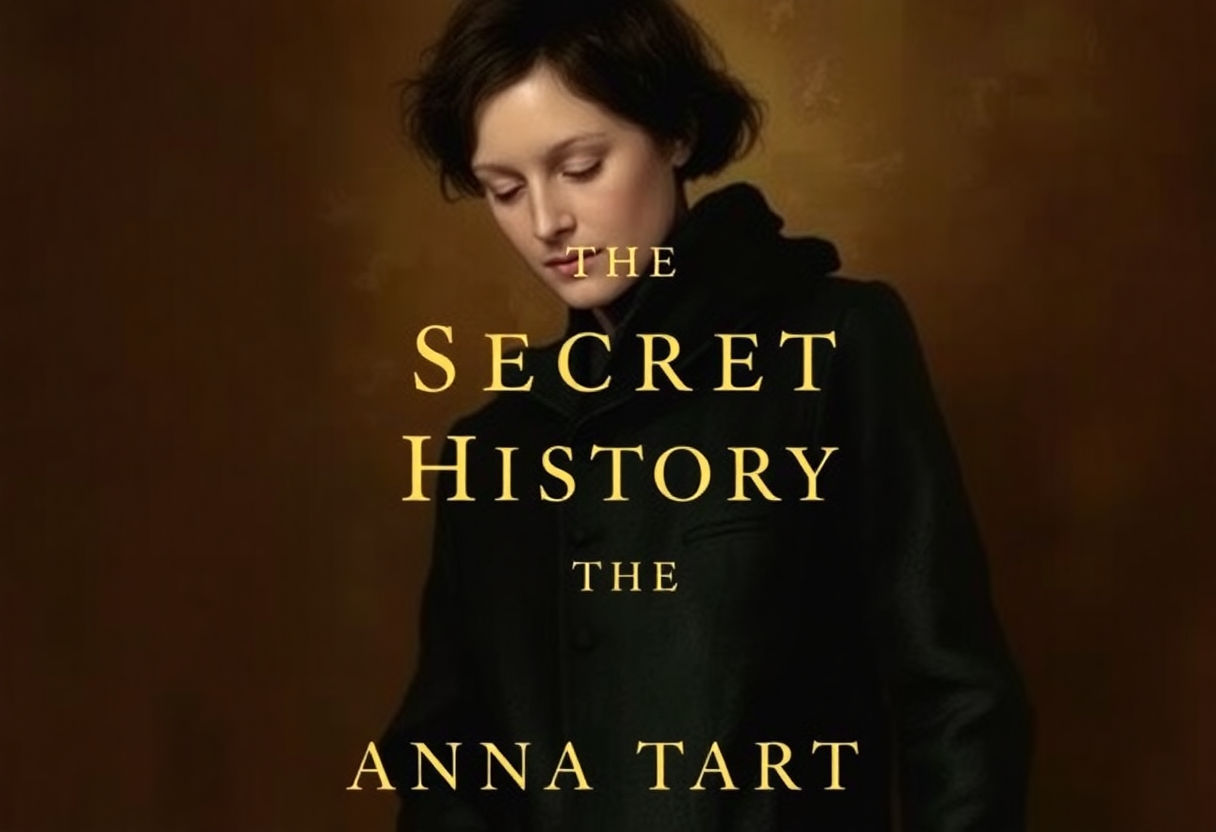Delve into the mesmerizing allure of Dark Academia, a niche literary and aesthetic movement that continues to captivate the imaginations of countless readers. With its unique blend of historical influences and compelling themes, Dark Academia invites enthusiasts into a world rich with mystery and intellectual pursuit. In this article, explore its origins, defining characteristics, and profound appeal. Uncover the influence of works like The Secret History by Donna Tartt, and meet the authors shaping this evocative genre. As we unravel its charm, consider both its timeless beauty and the critical discussions surrounding it.
Key Takeaways
- Dark Academia is a genre and aesthetic movement characterized by its fascination with classic literature, academia, and the pursuit of knowledge intertwined with a gothic allure.
- The genre draws inspiration from historical influences and time periods, which enrich its narrative and thematic depth.
- Central to Dark Academia’s charm are its unique visual elements and motifs such as esoteric rituals and clandestine societies.
- Noteworthy works like ‘The Secret History’ by Donna Tartt are pivotal in defining the essence of Dark Academia, setting the foundation for contemporary reinterpretations.
- Despite its allure, Dark Academia faces critiques related to cultural representation and its romanticized depiction of academic life.
What is Dark Academia?

Dark Academia is a literary and aesthetic movement that interweaves themes of knowledge, beauty, and tragedy, often set against the backdrop of prestigious academic environments. Born from a fascination with classic literature, philosophy, and art, it draws heavily from the moody and atmospheric allure of Gothic and Romantic traditions, creating a harmoniously somber aesthetic.
At its core, Dark Academia celebrates the pursuit of intellectualism and embraces the complexities of human experience, often exploring existential questions and the darker sides of ambition and human nature. It frequently features protagonists who are intellectually curious, drawing readers into narratives filled with mystery, moral ambiguity, and philosophical dialogues.
The origins of Dark Academia can be traced back to European institutions renowned for their historical significance and architectural grandeur. Books within this genre often highlight the intersection of past and present, imbuing stories with an air of enigmatic nostalgia. Many literary works under this genre capture the tension between the classical world and modern existence, allowing readers to explore rich, timeless themes.
Defining characteristics of Dark Academia include:
- Themes of mortality and the transience of life
- An appreciation for classicism and ancient cultures
- Storylines set in elite educational institutions
- Atmospheric settings that inspire a sense of mystery or foreboding
Heroes within these narratives are typically driven by an insatiable quest for knowledge but are frequently met with moral quandaries, which add depth and complexity to their journeys. Through these elements, Dark Academia offers a uniquely immersive experience that continues to captivate literary enthusiasts.
Historical Context of Dark Academia

Dark Academia, as a literary and aesthetic movement, is profoundly rooted in historical influences that draw from multiple periods emphasizing intellectual pursuits and classical education. The genre often evokes the mystique of the Gothic Revival period spanning the late 18th to the early 19th century. During this time, there was a renewed interest in medieval architecture and art, which served as a backdrop for themes of existentialism and mystery found in Dark Academia narratives.
The Victorian era further shaped the movement, known for its stringent social norms juxtaposed with burgeoning intellectual exploration and secret societies. Dark Academia literature frequently mirrors these aspects, highlighting the tension between societal expectations and personal desires for knowledge and power. The architectural grandeur and moodiness of Ivy League universities, particularly during this era, contribute significantly to the settings often depicted in these stories.
Moreover, the interwar period between World War I and World War II catalyzed philosophical and artistic exploration, with existentialist and nihilist themes emerging in response to global turmoil. Dark Academia often taps into this sense of searching for meaning amidst chaos, resonating with the themes of postmodernism that question absolute truths and embrace ambiguity.
This historical tapestry not only sets the stage for Dark Academia’s thematic depth but also reflects a temporal fascination with the past’s intellectual rigor and a yearning for the scholarly elite‘s secretive and exclusive allure. The genre persists as a portal to bygone eras, where the pursuit of knowledge is as perilous as it is enticing.
The Aesthetic and Themes of Dark Academia

Dark Academia captivates through its compelling aesthetic, defined by a blend of Gothic, classical, and academic elements. This visual style often features dark, muted color palettes, with textures such as worn leather, aged wood, and opulent fabrics, evoking an atmosphere reminiscent of old libraries and hallowed university halls. Candlelit rooms, vintage outfits, and aged tomes contribute to the overall somber yet rich appearance that is quintessential to the genre.
The thematic underpinnings of Dark Academia delve into complex and philosophical issues, often exploring existentialism, the pursuit of knowledge, and the darker sides of human nature. Central to these themes is the notion of an obsessive quest for intellectual and aesthetic excellence, which frequently leads to moral ambiguities and tragic outcomes. This is evident in how characters in Dark Academia literature navigate an intense academic environment, often grappling with questions of identity and ambition.
Additionally, Dark Academia is characterized by its reverence for the past. It weaves in historical touchstones, referencing classical literature, art, and ancient cultures. These elements serve not only as a backdrop but as integral components of the narrative, inviting readers into a world where the past profoundly shapes the present.
In essence, Dark Academia is a celebration of scholarly rigor infused with enigmatic allure, making it profoundly attractive to enthusiasts who appreciate the merger of intellectual depth with artistic elegance.
Top Book Pick: ‘The Secret History’ by Donna Tartt

In the realm of Dark Academia, ‘The Secret History’ by Donna Tartt stands as a quintessential work, enveloping readers in a world where academia and mystery intertwine. Set in a picturesque New England college, the novel masterfully blends intellectual pursuits with the darker sides of human nature. Tartt’s narrative explores profound themes such as guilt, morality, and the consequences of living outside societal norms.
Central to the novel is the group of eccentric, intellectual students who are drawn into a complex web of secrecy and betrayal under the influence of their charismatic professor. Their scholarly endeavors in an elite classics class evolve into a perilous experiment that leads to a gripping narrative filled with tension and moral ambiguity.
The book’s appeal lies in its vivid portrayal of the Dark Academia aesthetic—from grand libraries and ancient rituals to the exploration of classical philosophy and art. Tartt crafts a setting brimming with atmospheric details that evoke a sense of nostalgia and timeless beauty, which are hallmarks of the genre.
Quotes from the novel encapsulate the haunting allure and psychological depth: “Does such a thing as ‘the fatal flaw,’ that showy dark crack running down the middle of a life…exist outside literature?” This introspective line invites readers to ponder the very nature of human imperfection and ambition.
In essence, ‘The Secret History’ not only serves as a cornerstone of Dark Academia literature but also invites readers into a rich and intricately woven tapestry of intrigue, capturing the hearts of those who dare to explore its shadowy corridors.
Rites of Passage in Dark Academia

In the world of Dark Academia, rites of passage serve as transformative experiences imbued with a sense of initiation and belonging. These motifs often revolve around rituals, secret societies, and arcane traditions, reflecting the genre’s deep fascination with the mysteries of academic life.
Rituals and Ceremonies: Many Dark Academia narratives feature scenes where characters participate in age-old ceremonies, often shrouded in mystery. These rituals symbolize a transition from innocence to a darker form of enlightenment, challenging characters’ moral boundaries. For instance, such literary works often describe initiation rites that involve symbolic gestures or mysterious activities—elements that enhance the allure and mystique of the genre.
Esoteric Practices: Another prominent element is the portrayal of esoteric practices, which frequently serve as a gateway to the unknown. These practices, whether rooted in historical occultism or purely fictional, provide a sense of depth and a conduit to explore forbidden knowledge. Readers encounter characters engaging in activities that transcend the mundane, offering a glimpse into the pursuit of wisdom hidden in academic texts and the corridors of hallowed institutions.
The allure of these elements lies in their ability to create a narrative that resonates with those intrigued by the complexities of intellectual exploration. As novelist Donna Tartt insightfully notes in “The Secret History,” “It’s a very Greek idea, and a very profound one. Beauty is terror. Whatever we call beautiful, we quiver before it.” This delicate balance of beauty, terror, and knowledge forms the essence of Dark Academia’s rites of passage, inviting readers to undergo their own transformative journey through its pages.
Noteworthy Authors in Dark Academia
Donna Tartt stands as a central figure in the Dark Academia genre, her novel “The Secret History” often regarded as a seminal work. In Tartt’s world, the convergence of intellectual rigor and moral ambiguity brings to life a secluded academic setting filled with suspense and philosophical introspection.
M.L. Rio, with her novel “If We Were Villains,” delivers a narrative rich with theatrical and literary allure, reminiscent of the tension and intricacy seen in classic tragedies. Her work explores the intricate dynamics of a group of conservatory students, weaving themes of ambition, loyalty, and betrayal.
Oscar Wilde, though not a contemporary author, infuses Dark Academia with his classic novel, “The Picture of Dorian Gray.” His exploration of aesthetics, hedonism, and the darker facets of human nature continues to inspire writers and readers within the genre.
Kazuo Ishiguro, though not typically categorized within Dark Academia, crafts narratives such as “Never Let Me Go” that echo its themes of existential questioning and moral complexity within seemingly idyllic educational settings.
Donna Tartt, featured again for her brilliant work, “The Little Friend,” presents a Southern Gothic twist, underscoring the depths of familial and societal complexities.
Tana French brings mystery and a psychological edge with “The Likeness,” where immersive investigation into identity and belonging mirrors the clandestine scholarly enclaves typical of Dark Academia. Each of these authors contributes a distinct texture to the fabric of Dark Academia, enriching the genre with diverse perspectives and intricate narratives.
Modern Twists on Dark Academia
In recent years, Dark Academia has evolved, infusing modern elements while maintaining its traditional roots, making the genre relevant for contemporary audiences. Modern Dark Academia books often incorporate diverse and inclusive narratives, reflecting the changing dynamics of today’s society. These narratives dare to challenge the traditional academic settings often characterized by an exclusive focus on Western classical studies.
A prominent example is “Babel” by R.F. Kuang, where the exploration of academic power dynamics and colonial influences is set against the backdrop of a meticulously crafted historical fantasy. This novel adeptly melds the core themes of Dark Academia with modern sensibilities, offering a refreshed perspective.
Similarly, “The Atlas Six” by Olivie Blake introduces a narrative centered on magical realism and experimental human psychology. This work employs the typical secrecy and intellectual pursuit of Dark Academia but enriches the genre with a supernatural twist, reflecting popular current trends in literature.
Additionally, the genre sees an emergence of female voices and protagonists in works like “Catherine House” by Elisabeth Thomas, which challenges the patriarchal undercurrents often found in classic narratives. This book dives into the psychological complexities within an enigmatic academic institution, presenting a fresh take on self-identity and freedom.
These modern reinterpretations exemplify how the genre is not fading but rather adapting to reflect societal shifts, ensuring Dark Academia’s timeless allure continues to resonate with new generations while honoring its intellectual legacy.
Critiques and Controversies
The allure of Dark Academia, with its focus on classic literature, existential struggles, and exclusive scholarly circles, is not without its critics. Some argue that the genre tends to romanticize the elitism and exclusivity of higher education, often highlighting prestigious institutions while neglecting issues of accessibility and diversity. This portrayal can be viewed as promoting a reductive view of academia that may exclude underrepresented groups.
Critics also point out that Dark Academia frequently glorifies morally ambiguous or ethically questionable behavior, such as the intense pressures and obsessions that lead to destructive actions. The narrative often involves secretive societies, which, while intriguing, perpetuate an ideal of hidden knowledge accessible only to a select few. This can potentially glorify a sense of alienation and social isolation, lacking in healthy relationships or connections.
Moreover, there are cultural concerns about the predominantly Western-centric perspective in the genre. With its roots deeply entrenched in European settings, characters, and philosophies, Dark Academia is often critiqued for overlooking non-Western contributions to the academic landscape. This narrow focus might inadvertently reinforce a Eurocentric worldview, thus alienating audiences from varied cultural backgrounds.
Despite these criticisms, Dark Academia continues to captivate readers by inviting them into a world that is both intellectually stimulating and atmospherically rich. To evolve and remain relevant, the genre must address these critiques, paving the way for more inclusive and diverse representations within its deeply compelling narratives.
Conclusion
The enduring allure of Dark Academia lies in its captivating blend of aesthetic elegance and intellectual rigor, resonating deeply with readers. As this genre continues to inspire modern literature, its fascination with the past and exploration of complex themes offer valuable reflections on contemporary culture. For those enamored by the mysterious and the esoteric, embracing Dark Academia’s world can enrich one’s literary journey. As the genre evolves, it promises to broaden its influence, inviting more readers to savor its many nuances and deep-seated philosophical inquiries.
Frequently Asked Questions
What are some essential themes found in Dark Academia literature?
Dark Academia literature often explores themes such as the pursuit of knowledge, the dichotomy of beauty and darkness, and the moral complexities of human nature. These works often present a nuanced depiction of academic life intertwined with mysticism and existential questioning.
Who are some prominent authors associated with the Dark Academia genre?
Prominent authors in this genre include Donna Tartt, known for “The Secret History,” and Oscar Wilde, whose works embody many of the dark, intellectual elements typical of Dark Academia. Other influential writers include M.L. Rio and R.F. Kuang, who have contributed significantly to modern interpretations of the genre.
How does Dark Academia differentiate itself from other literary movements?
Dark Academia distinguishes itself through its unique blend of gothic influences and academic settings, often incorporating classical literature and philosophical discourse. Unlike other literary movements, it emphasizes the aesthetic beauty of old institutions and the allure of esoteric knowledge.
Are there modern books that have redefined the Dark Academia genre?
Yes, modern authors have expanded the boundaries of Dark Academia by introducing contemporary social issues and diverse narratives. Notable examples include “If We Were Villains” by M.L. Rio and “Babel” by R.F. Kuang, each offering a fresh perspective while maintaining the genre’s core elements.
What potential critiques exist regarding Dark Academia?
Critiques of Dark Academia often focus on its romanticization of elitism and its sometimes exclusionary representation of academic life. Critics argue that these aspects can inadvertently uphold outdated social hierarchies, calling for more inclusive narratives within the genre.



